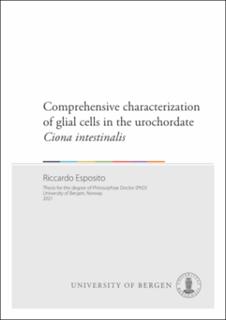| dc.description.abstract | There are two main classes of cells that are present in the nervous system: neurons and glia. Neurons are the signalling units of the nervous system and are responsible to transmit electrical and chemical signals to other cells, and their function heavily relies on specialized glial cells. Initially considered as the glue keeping neurons together in nervous tissues, decades of research have highlighted the importance of glial cells and the pivotal roles they have in the nervous system assembly and functions. Glial cells are involved in neurogenesis, neuronal differentiation and migration, axonal growing and myelination, synaptogenesis, regulation of the synaptic microenvironment controlling ions and neurotransmitter concentrations, synaptic pruning, structural and tropic support to neurons, and phagocytosis of cell debris or external pathogen in defence to neurons. Also, glia contributes to various neurological disorders such as autism, schizophrenia, and neurodegenerative diseases such as Alzheimer’s, Parkinson's, and amyotrophic lateral sclerosis. Given the number of processes in which they are involved, glial cells have attracted the attention of researchers, trying to unravel many aspects of their biology that are still elusive. Glial cells among vertebrates and invertebrates species display commonalities in their molecular fingerprint and in performing analogous functions, raising questions about their evolutionary origin. Whether glial cells originate from a common ancestor and have evolved together with the nervous system or have appeared multiple times during evolution is still unclear. Neither is known to which extend glial cells had contributed to the evolution of the nervous system as a whole. To gain more information about glia history and have a more complete picture of the evolution of the nervous system it is therefore fundamental to study glial cells in unexplored organisms. Invertebrate organisms provide suitable experimental models to explore glia functions in vivo because of their simplified nervous system architectures and the availability of several molecular toolkits. In our current understanding, glial cells are present in the nervous system of nematodes, arthropods, annelids, mollusks, and ambulacrarians, while little is known about glial cells in the invertebrate chordates. The limited and sparse evidence about glial cell types in urochordates, the sister group of vertebrates, has led to the hypothesis that glia have been mostly lost in this group.
This thesis provides a comprehensive understanding of the glial cells present in the embryonic and larva CNS of the urochordate Ciona, exploring their molecular characteristic and investigating the roles they have in the development and functioning of the nervous system. This work shows that glial cells with specialize functions are present in the urochordate, the sister group of vertebrates, providing insight into the evolution of glial cells in the chordate lineage. | en_US |
